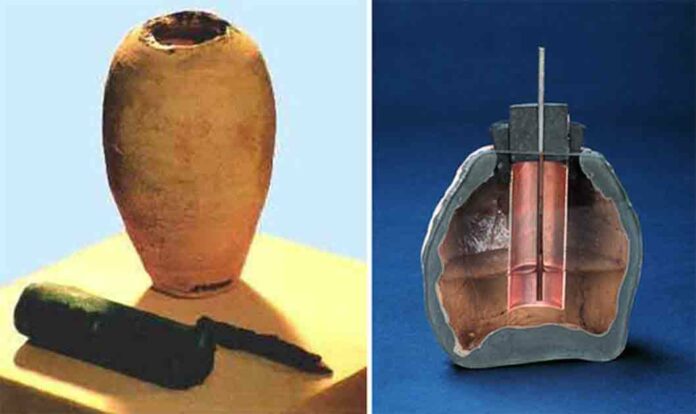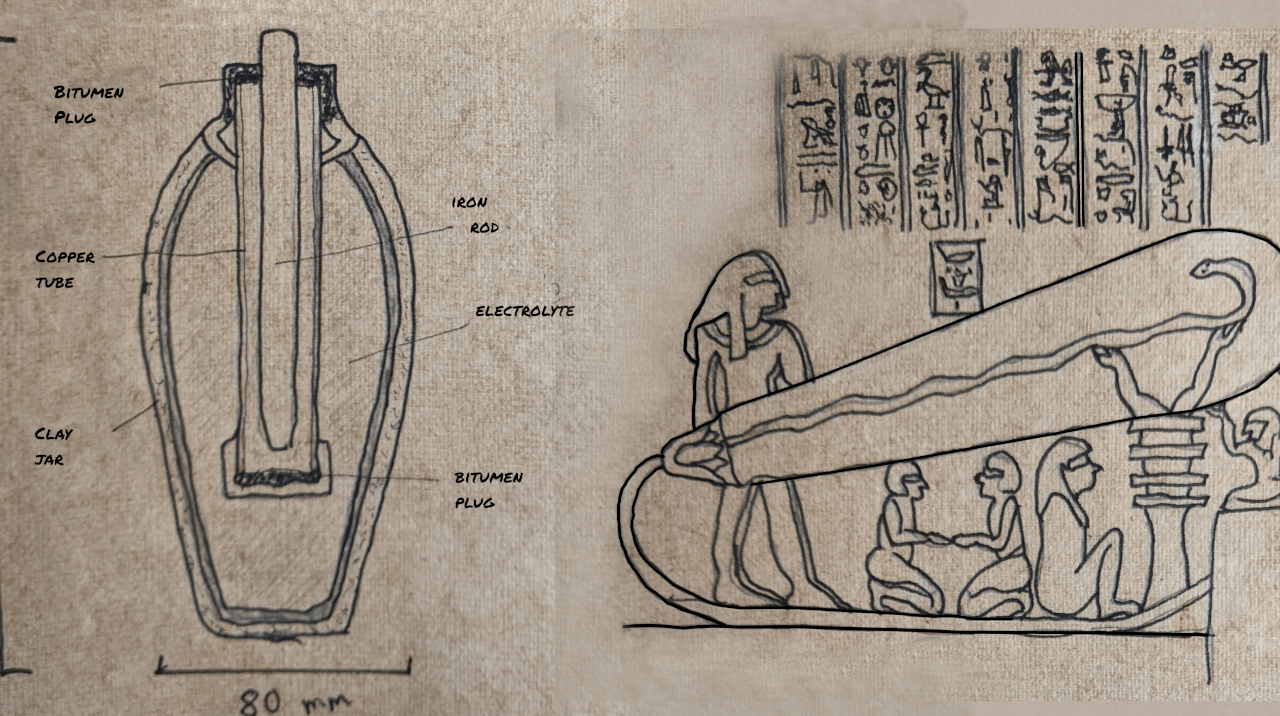Baghdad Battery Mystery: Did Ancient Mesopotamians Harness Electricity?

The discovery of the Baghdad Battery has intrigued scholars and historians for decades, challenging traditional views on the technological and medical knowledge of ancient civilizations. The artifact, which some believe to be a primitive battery, has sparked debates about its true purpose, with theories ranging from electroplating to medical uses. This article explores the mystery surrounding the Baghdad Battery and examines the hypothesis that it may have been an ancient tool for electrotherapy, as suggested by Paul T. Keyser in the 1990s.
The Mysterious Baghdad Battery

The Baghdad Battery, also known as the Parthian Battery, is a clay pot containing a copper cylinder with an iron rod suspended inside. These artifacts, discovered during the 1936 excavations near Baghdad, date back to the Parthian period (250 BC – 224 AD). The device’s unique construction has led to speculation about its purpose, with some researchers proposing that it could have been used as a rudimentary electrical device.
Debating the Purpose of the “Baghdad Battery”
The function of the Baghdad Battery remains a topic of contention. Established academia largely dismisses the idea of it being an ancient battery, favoring more conventional explanations such as a storage container. However, alternative historians and enthusiasts propose that the artifact could have been used for electroplating or even as a primitive electrical device. The lack of electroplated objects found alongside the battery adds to the mystery, fueling ongoing debates about its true purpose.
Keyser’s Hypothesis: An Ancient Medical Device?

In the 1990s, Paul T. Keyser published an article in the Journal of Near Eastern Studies that challenged the conventional narrative of ancient ignorance in technology and medicine. Keyser suggested that ancient civilizations, including the Akkadians and Babylonians, might have used the Baghdad Battery for medical purposes. He proposed that electric currents generated by linking multiple batteries could have been used to treat ailments, similar to the use of electric eels by other ancient cultures.
The Case for Electrotherapy in Ancient Mesopotamia

Keyser’s theory is supported by historical accounts of ancient medical practices. For instance, in ancient Rome, the physician Scribonius Largus prescribed the use of electric fish to treat conditions such as gout and headaches. While electric fish were not native to the Persian Gulf or Mesopotamian rivers, Keyser posits that the Baghdad Battery could have been an alternative means of harnessing electricity for therapeutic purposes.
Challenging Conventional Narratives
Keyser’s hypothesis has been met with skepticism by the academic community, as it challenges the traditional view of human evolution from primitive beings to intelligent, creative humans. The concept of “Out of Place Artifacts” (OOPARTS), which includes the Baghdad Battery, has long been controversial, with mainstream scholars often dismissing such artifacts as anomalies or frauds.
The Legacy of the Baghdad Battery

The ongoing debates surrounding the Baghdad Battery reflect broader questions about the capabilities of ancient civilizations. As more evidence emerges, it becomes increasingly clear that our ancestors may have possessed knowledge and technologies far more advanced than previously believed. Unfortunately, many of these artifacts, including the Baghdad Battery, were lost or damaged during the war in Iraq, making it difficult to uncover the full story.
Conclusion
The mystery of the Baghdad Battery continues to captivate scholars and enthusiasts alike. Whether it was an ancient medical device, a tool for electroplating, or something entirely different, the artifact challenges our understanding of ancient technology and medicine. As we continue to explore the past, the Baghdad Battery serves as a reminder of the complexities and innovations of ancient civilizations that still puzzle us today.
Video
News
The Hanging Temple: China’s 1,500-Year-Old Cliffside Marvel of Faith and Engineering
The Hanging Temple: China’s 1,500-Year-Old Cliffside Marvel of Faith and Engineering Perched precariously on the cliffs of Mount Heng in Shanxi Province, China, the Hanging Temple, also known as Xuankong Temple, Hengshan Hanging Temple, or Hanging Monastery, is an architectural…
The Willendorf Venus: A 30,000-Year-Old Masterpiece Reveals Astonishing Secrets
The Willendorf Venus: A 30,000-Year-Old Masterpiece Reveals Astonishing Secrets The “Willendorf Venus” stands as one of the most revered archaeological treasures from the Upper Paleolithic era. Discovered in 1908 by scientist Johann Veran near Willendorf, Austria, this small yet profound…
Unveiling the Maya: Hallucinogens and Rituals Beneath the Yucatán Ball Courts
Unveiling the Maya: Hallucinogens and Rituals Beneath the Yucatán Ball Courts New archaeological research has uncovered intriguing insights into the ritual practices of the ancient Maya civilization. The focus of this study is a ceremonial offering found beneath the sediment…
Uncovering the Oldest Agricultural Machine: The Threshing Sledge’s Neolithic Origins
Uncovering the Oldest Agricultural Machine: The Threshing Sledge’s Neolithic Origins The history of agricultural innovation is a fascinating journey that spans thousands of years, and one of the earliest known agricultural machines is the threshing sledge. Recently, a groundbreaking study…
Nara’s Ancient Sword: A 1,600-Year-Old Protector Against Evil Spirits
Nara’s Ancient Sword: A 1,600-Year-Old Protector Against Evil Spirits In a remarkable discovery that has captured the attention of archaeologists and historians alike, a 7.5-foot-long iron sword was unearthed from a 1,600-year-old burial mound in Nara, Japan. This oversized weapon,…
The Inflatable Plane, Dropped Behind the Lines for Downed Pilots
Experimental The Inflatable Plane, Dropped Behind the Lines for Downed Pilots The Inflatoplane from Goodyear was an unconventional aircraft developed by the Goodyear Aircraft Company, a branch of the renowned Goodyear Tire and Rubber Company, also famed for the Goodyear…
End of content
No more pages to load











